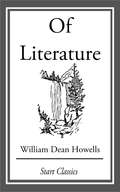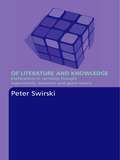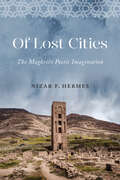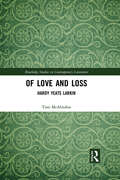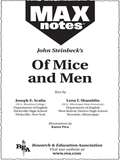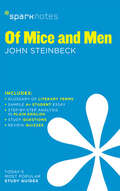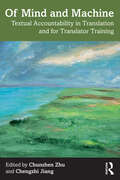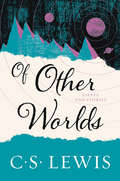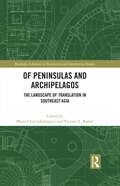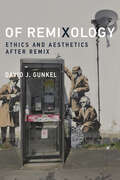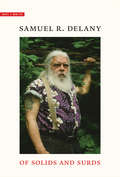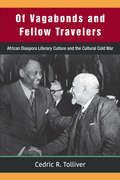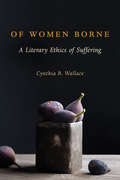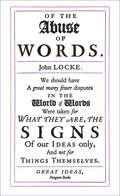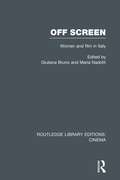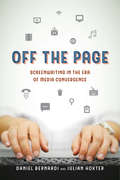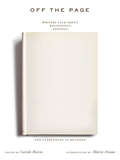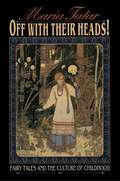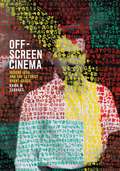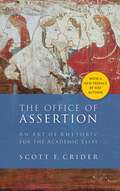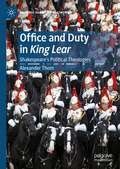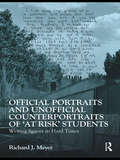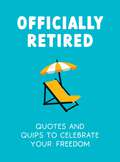- Table View
- List View
Of Literature
by William Dean HowellsWilliam Dean Howells (1837-1920) was an American realist author and literary critic. He wrote his first novel, Their Wedding Journey, in 1871, but his literary reputation really took off with the realist novel A Modern Instance, published in 1882, which describes the decay of a marriage. His 1885 novel The Rise of Silas Lapham is perhaps his best known, describing the rise and fall of an American entrepreneur in the paint business. His social views were also strongly reflected in the novels Annie Kilburn (1888) and A Hazard of New Fortunes (1890). While known primarily as a novelist, his short story "Editha" (1905) - included in the collection Between the Dark and the Daylight (1907) - appears in many anthologies of American literature. Howells also wrote plays, criticism, and essays about contemporary literary figures such as Ibsen, Zola, Verga, and, especially, Tolstoy, which helped establish their reputations in the United States. He also wrote critically in support of many American writers. It is perhaps in this role that he had his greatest influence.
Of Literature and Knowledge: Explorations in Narrative Thought Experiments, Evolution and Game Theory
by Peter Swirski"Of Literature and Knowledge looks ... like an important advance in this new and very important subject... literature is about to become even more interesting." – Edward O. Wilson, Pellegrino University Professor, Harvard University. Framed by the theory of evolution, this colourful and engaging volume presents a new understanding of the mechanisms by which we transfer information from narrative make-believe to real life. Ranging across game theory and philosophy of science, as well as poetics and aesthetics, Peter Swirski explains how literary fictions perform as a systematic tool of enquiry, driven by thought experiments. Crucially, he argues for a continuum between the cognitive tools employed by scientists, philosophers and scholars or writers of fiction. The result is a provocative study of our talent and propensity for creating imaginary worlds, different from the world we know yet invaluable to our understanding of it. Of Literature and Knowledge is a noteworthy challenge to contemporary critical theory, arguing that by bridging the gap between literature and science we might not only reinvigorate literary studies but, above all, further our understanding of literature.
Of Lost Cities: The Maghribī Poetic Imagination
by Nizar F. HermesThe poetic memorialization of the Maghribī city illuminates the ways in which exilic Maghribī poets constructed idealized images of their native cities from the ninth to nineteenth centuries CE.The first work of its kind in English, Of Lost Cities explores the poetics and politics of elegiac and nostalgic representations of the Maghribī city and sheds light on the ingeniously indigenous and indigenously ingenious manipulation of the classical Arabic subgenres of city elegy and nostalgia for one’s homeland. Often overlooked, these poems – distinctively Maghribī, both classical and vernacular, and written in Arabic and Tamazight – deserve wider recognition in the broader tradition and canon of (post)classical Arabic poetry. Alongside close readings of Maghribī poets such as Ibn Rashīq, Ibn Sharaf, al-Ḥuṣrī al-Ḍarīr, Ibn Ḥammād al-Ṣanhājī, Ibn Khamīs, Abū al-Fatḥ al-Tūnisī, al-Tuhāmī Amghār, and Ibn al-Shāhid, Nizar Hermes provides a comparative analysis using Western theories of place, memory, and nostalgia.Containing the first translations into English of many poetic gems of premodern and precolonial Maghribī poetry, Of Lost Cities reveals the enduring power of poetry in capturing the essence of lost cities and the complex interplay of loss, remembrance, and longing.
Of Love and Loss: Hardy Yeats Larkin (Routledge Studies in Contemporary Literature)
by Tom McAlindonA study of the poetry of Hardy, Yeats, and Larkin in relation to their shared preoccupation with time, change, and loss, the most ancient and fertile theme in lyric and reflective verse, known to earlier English poets as mutability. Though the importance of the socio-political and ideological context is in every case acknowledged, the literary-history context is viewed as primary: hence the introductory survey of foundational Renaissance and Romantic poets with whose work Hardy, Yeats, and Larkin were thoroughly familiar. Although a preoccupation with the subject of time and change in the work of these three poets is a critical commonplace, no one has ever isolated it for special attention, or used it to link them either together or with their historical predecessors. This is an entirely new approach to their work. The critical methodology employed is evidential and analytical rather than theoretical, focussed throughout on the meaning and the mood of each poem and the distinctive individuality of each poet.
Of Mice and Men (Maxnotes Literature Guides)
by Lena ShamblinREA's MAXnotes for John Steinbeck's Of Mice and Men MAXnotes offer a fresh look at masterpieces of literature, presented in a lively and interesting fashion. Written by literary experts who currently teach the subject, MAXnotes will enhance your understanding and enjoyment of the work. MAXnotes are designed to stimulate independent thought about the literary work by raising various issues and thought-provoking ideas and questions. MAXnotes cover the essentials of what one should know about each work, including an overall summary, character lists, an explanation and discussion of the plot, the work's historical context, illustrations to convey the mood of the work, and a biography of the author. Each chapter is individually summarized and analyzed, and has study questions and answers.
Of Mice and Men SparkNotes Literature Guide (SparkNotes Literature Guide Series #51)
by SparkNotesOf Mice and Men SparkNotes Literature Guide by John Steinbeck Making the reading experience fun! When a paper is due, and dreaded exams loom, here's the lit-crit help students need to succeed! SparkNotes Literature Guides make studying smarter, better, and faster. They provide chapter-by-chapter analysis; explanations of key themes, motifs, and symbols; a review quiz; and essay topics. Lively and accessible, SparkNotes is perfect for late-night studying and paper writing. Includes:An A+ Essay—an actual literary essay written about the Spark-ed book—to show students how a paper should be written.16 pages devoted to writing a literary essay including: a glossary of literary termsStep-by-step tutoring on how to write a literary essayA feature on how not to plagiarize
Of Mind and Machine: Textual Accountability in Translation and for Translator Training
by Chengzhi Jiang Chunshen ZhuOf Mind and Machine provides a broad perspective on multi-level dialogic engagements between text and reader as seen from the use of language in presenting information to generate a discursive experience in various sociocultural settings.The book observes contexts such as national literature in translation, diplomatic speech events, visual-verbal inter-semiotic translation, second language learning, interpreter training, and computer-aided teaching of translation and bilingual writing. These present a unifying interest in textual accountability between form, function, and effect that has been examined from a dual perspective of rhetoric and pragmatics. The research embodies a significant prospect of integration of academic originality with technological innovation to advance language education in the present digital era. Theoretically well-founded, the book does not confine itself to a self-contained system of conceptions and methods. Instead, it demonstrates a rich variety of research possibilities in support of theorisation and education in the field of language and translation studies.This edited volume is primarily intended for advanced undergraduates, postgraduates, researchers, and teachers within the fields of language and translation, applied linguistics, and discourse analysis.
Of Other Worlds: Essays and Stories
by C. S. LewisA repackaged edition of the revered author’s treasury of essays and stories which examine the value of creative writing and imaginative exploration.C. S. Lewis—the great British writer, scholar, lay theologian, broadcaster, Christian apologist, and bestselling author of Mere Christianity, The Screwtape Letters, The Great Divorce, The Chronicles of Narnia, and many other beloved classics—presents a well-reasoned case for the importance of story and wonder, elements often ignored by critics of his time. He also discusses his favorite kinds of stories—children’s stories and fantasies—and offers insights into his most famous works, The Chronicles of Narnia and the Space Trilogy.
Of Peninsulas and Archipelagos: The Landscape of Translation in Southeast Asia (Routledge Advances in Translation and Interpreting Studies)
by Vicente L. Rafael Phrae ChittiphalangsriComprising 11 countries and hundreds of languages from one of the most culturally diverse regions in the world, the chapters in this collection explore a wide range of translation issues. The subject of this volume is set in the contrasted landscapes of mainland peninsulas and maritime archipelagos in Southeast Asia, which, whilst remaining a largely minor area in Asian studies, harbors a wealth of textual heritage that opens to inquiries and new readings. From the post-Angkor Cambodia, the post-colonial Viantiane, to the ultra-modern Singapore metropolis, translation figures problematically in the modernization of indigenous literatures, criss-crossing chronologically and spatially through different literary landscapes. The peninsular geo-body gives rise to the politics of singularity as seen in the case of the predominant monolingual culture in Thailand, whereas the archipelagic geography such as the thousand islands of Indonesia allows for peculiar types of communication. Translation can also be metaphorized poetically to configure the transference in different scenarios such as the cases of self-translation in Philippine protest poetry and untranslatability in Vietnamese diasporic writings. The collection also includes intra-regional comparative views on historical and religious terms. This book will appeal to scholars and postgraduate students of translation studies, sociolinguistics, and Southeast Asian studies.
Of Places Literature (Fourth Edition)
by Jan AndersonGive students literature selections that will also help them apply lessons to their own lives. This grade 8 textbook features interesting stories and poems grouped by place-bound theme; categories include home, school, neighborhood, America, world, the imagination, and other places. Robert Frost, John Greenleaf Whittier, Washington Irving, and Pearl Buck are among the prominent authors represented. Selections culled from longer works include The Jungle Book, Up From Slavery, and Ben Hur. Lessons included bolded & defined vocabulary words, as well as "Think it through" questions.
Of Remixology: Ethics and Aesthetics after Remix
by David J. GunkelA new theory of moral and aesthetic value for the age of remix, going beyond the usual debates over originality and appropriation.Remix—or the practice of recombining preexisting content—has proliferated across media both digital and analog. Fans celebrate it as a revolutionary new creative practice; critics characterize it as a lazy and cheap (and often illegal) recycling of other people's work. In Of Remixology, David Gunkel argues that to understand remix, we need to change the terms of the debate. The two sides of the remix controversy, Gunkel contends, share certain underlying values—originality, innovation, artistic integrity. And each side seeks to protect these values from the threat that is represented by the other. In reevaluating these shared philosophical assumptions, Gunkel not only provides a new way to understand remix, he also offers an innovative theory of moral and aesthetic value for the twenty-first century.In a section called “Premix,” Gunkel examines the terminology of remix (including “collage,” “sample,” “bootleg,” and “mashup”) and its material preconditions, the technology of recording. In “Remix,” he takes on the distinction between original and copy; makes a case for repetition; and considers the question of authorship in a world of seemingly endless recompiled and repurposed content. Finally, in “Postmix,” Gunkel outlines a new theory of moral and aesthetic value that can accommodate remix and its cultural significance, remixing—or reconfiguring and recombining—traditional philosophical approaches in the process.
Of Solids and Surds: Notes for Noël Sturgeon, Marilyn Hacker, Josh Lukin, Mia Wolff, Bill Stribling, and Bob White (Why I Write)
by Samuel R DelanyIn the fourth volume in the Why I Write series, the iconic Samuel Delany remembers fifty years of writing and shaping the world of speculative fiction&“Delany&’s prismatic output is among the most significant, immense and innovative in American letters.&”—Jordy Rosenberg, New York Times"He dispenses wisdom about craft—including the demanding revision process his dyslexia requires—but most moving are the moments when he sheds light on connections he has made with other readers and writers. . . . Delany&’s fans are in for a treat."—Publishers Weekly, Starred Review Language is the way humans deal with past, present, and future possibilities, as well as the subset called the probable. This is where Samuel Delany finds his justification for the writing life. Since the 1960s, occurrences such as Sputnik, school desegregation, and the advent of AIDS have given Delany, as a gay man, as a black man, access to certain truths and facts he could write about, and the language—sometimes fiction, sometimes nonfiction—in which to present them. &“We write,&” Delany believes, &“at the intersection of your experience and mine in a way, I hope, that allows recognition.&”
Of Vagabonds and Fellow Travelers: African Diaspora Literary Culture and the Cultural Cold War (Class : Culture)
by Cedric TolliverOf Vagabonds and Fellow Travelers recovers the history of the writers, artists, and intellectuals of the African diaspora who, witnessing a transition to an American-dominated capitalist world-system during the Cold War, offered searing critiques of burgeoning U.S. hegemony. Cedric R. Tolliver traces this history through an analysis of signal events and texts where African diaspora literary culture intersects with the wider cultural Cold War, from the First Congress of Black Writers and Artists organized by Francophone intellectuals in September 1956 to the reverberations among African American writers and activists to the assassination of Patrice Lumumba. Among Tolliver’s subjects are Caribbean writers Jacques Stephen Alexis, George Lamming, and Aimé Césaire, the black press writing of Alice Childress and Langston Hughes, and the ordeal of Paul Robeson, among other topics. The book’s final chapter highlights the international and domestic consequences of the cultural Cold War and discusses their lingering effects on our contemporary critical predicament.
Of Women Borne: A Literary Ethics of Suffering (Gender, Theory, and Religion)
by Cynthia WallaceThe literature of Adrienne Rich, Toni Morrison, Ana Castillo, and Chimamanda Ngozi Adichie teaches a risky, self-giving way of reading (and being) that brings home the dangers and the possibilities of suffering as an ethical good. Working the thought of feminist theologians and philosophers into an analysis of these women's writings, Cynthia R. Wallace crafts a literary ethics attentive to the paradoxes of critique and re-vision, universality and particularity, and reads in suffering a redemptive or redeemable reality.Wallace's approach recognizes the generative interplay between ethical form and content in literature, which helps isolate more distinctly the gendered and religious echoes of suffering and sacrifice in Western culture. By refracting these resonances through the work of feminists and theologians of color, her book also shows the value of broad-ranging ethical explorations into literature, with their power to redefine theories of reading and the nature of our responsibility to art and each other.
Of the Abuse of Words (Penguin Great Ideas)
by John LockeJohn Locke was one of the greatest figures of the Enlightenment, whose assertion that reason is the key to knowledge changed the face of philosophy. These writings on thought, ideas, perception, truth and language are some of the most influential in the history of Western thought. Throughout history, some books have changed the world. They have transformed the way we see ourselves - and each other. They have inspired debate, dissent, war and revolution. They have enlightened, outraged, provoked and comforted. They have enriched lives - and destroyed them. Now Penguin brings you the works of the great thinkers, pioneers, radicals and visionaries whose ideas shook civilization and helped make us who we are.
Off Screen: Women and Film in Italy: Seminar on Italian and American directions (Routledge Library Editions: Cinema)
by Giuliana Bruno Maria NadottiThis feminist anthology from Italy offers an enriching perspective on cinema studies. Focusing on women’s engagement with political theory and film-making, the book never loses sight of the female experience of cinema. It examines how women have chosen to represent themselves and how they have been represented, and how they deal with the cinematic apparatus, as subjects of production, objects of representation, and spectators. A variety of approaches are offered, ranging from psychoanalysis and semiology to history. With an exhaustive filmography, this anthology of chapters by eminent theorists demonstrates the central importance of recent developments in Italy for the whole spectrum of film and feminist studies.
Off the Page: Screenwriting in the Era of Media Convergence
by Daniel Bernardi Julian HoxterOff the Page examines the business and craft of screenwriting in the era of media convergence. Daniel Bernardi and Julian Hoxter use the recent history of screenwriting labor coupled with close analysis of scripts in the context of the screenwriting paraindustry—from “how to write a winning script” books to screenwriting software—to explore the state of screenwriting today. They address the conglomerate studios making tentpole movies, expanded television, Indiewood, independent animation, microbudget scripting, the video games industry, and online content creation. Designed for students, producers, and writers who want to understand what studios want and why they want it, this book also examines how scripting is developing in the convergent media, beneath and beyond the Hollywood tentpole. By addressing specific genres across a wide range of media, this essential volume sets the standard for anyone in the expanded screenwriting industry and the scholars that study it.
Off the Page: Writers Talk About Beginnings, Endings, and Everything In Between
by Marie Arana Carole BurnsA guide where today's best writers reveal their secrets. How do writers approach a new novel? Do they start with plot, character, or theme? A. S. Byatt starts with color. E. L. Doctorow begins with an image. In Off the Page, authors tell us how they work, giving insight into their writing process. Gathered from some of today's best writers--Paul Auster, Martin Amis, Gish Jen, Dan Chaon, Alice McDermott, and many others interviewed on washingtonpost.com's "Off the Page" series--host Carole Burns has woven their wisdom into chapters illuminating to any writer or reader. How does place influence authors? How do they make a sex scene work? How do they tell when the work is done? Walter Mosley defying genre; Shirley Hazzard on love; Michael Cunningham on compassion: these and more from Richard Ford, Jhumpa Lahiri, and Charles Baxter will deepen your appreciation for the art of writing and excite you to try new ways of writing yourself.
Off with Their Heads!: Fairy Tales and the Culture of Childhood
by Maria TatarWhen Hansel and Gretel try to eat the witch's gingerbread house in the woods, are they indulging their "uncontrolled cravings" and "destructive desires" or are they simply responding normally to the hunger pangs they feel after being abandoned by their parents? Challenging Bruno Bettelheim and other critics who read fairy tales as enactments of children's untamed urges, Maria Tatar argues that it is time to stop casting the children as villians. In this provocative book she explores how adults mistreat children, focusing on adults not only as hostile characters in fairy tales themselves but also as real people who use frightening stories to discipline young listeners.
Off-Screen Cinema: Isidore Isou and the Lettrist Avant-Garde
by Kaira M. CabañasOne of the most important avant-garde movements of postwar Paris was Lettrism, which crucially built an interest in the relationship between writing and image into projects in poetry, painting, and especially cinema. Highly influential, the Lettrists served as a bridge of sorts between the earlier works of the Dadaists and Surrealists and the later Conceptual artists.Off-Screen Cinema is the first monograph in English of the Lettrists. Offering a full portrait of the avant-garde scene of 1950s Paris, it focuses on the film works of key Lettrist figures like Gil J Wolman, Maurice Lemaître, François Dufrêne, and especially the movement's founder, Isidore Isou, a Romanian immigrant whose “discrepant editing” deliberately uncoupled image and sound. Through Cabañas's history, we see not only the full scope of the Lettrist project, but also its clear influence on Situationism, the French New Wave, the New Realists, as well as American filmmakers such as Stan Brakhage.
Office Of Assertion: An Art Of Rhetoric For Academic Essay
by Scott F. CriderScott F. Crider addresses the intelligent university student with respect and humor. A short but serious book of rhetoric, it is informed by both the ancient rhetorical tradition and recent discoveries concerning the writing process. Though practical, it is not simply a how-to manual; though philosophical, it never loses sight of writing itself. Crider combines practical guidance about how to improve an academic essay with reflection on the purpose - educational, political, and philosophical - of such improvement.
Office and Duty in King Lear: Shakespeare’s Political Theologies (Palgrave Shakespeare Studies)
by Alexander ThomThis book advances five original readings of Shakespeare's King Lear, influenced by Giorgio Agamben, but tempered by primary research into Jacobean literature, law, religion, and philosophy. To grasp Lear’s encounter between politics and identity, the play demands a wider understanding of the religious influence on political thought. As Lear himself realises, sovereignty is an extreme, glamorous example of a deeper category: sacred office. Lear also shows duty intersecting with a hierarchy of bastards, outlaws, women, waifs, and monks. This book introduces concepts like petit treason, civil death, and waivery into political theological studies, complicating Agamben’s models. Goneril’s treason shows the sovereign’s consort and children are consecrated lives too. Lear’s crisis of "self-knowing" stages a landmark critique of office. The promise of his poignant speech before the prison is foreclosed by Shakespeare's invention: an officer dutifully murdering Cordelia. This book’s conclusion, through Hannah Arendt, reconsiders Lear’s persistent association with the Holocaust.
Official Language Regimes: Transformation and Innovation (Language and Globalization)
by Colin H. WilliamsThis volume has two aims: first, to interpret long-term structural/systemic transformations in the maturation of a specific type of language regime (those with a majoritarian state language and an officially designated minority language); and secondly, to identify and evaluate instances of good practice policy interventions which strengthen the promotion, protection and regulation of selected target languages in Western Europe and Canada. The interviews and documentary analysis within the book were carried out in eight jurisdictions ranging from Canada to Catalonia together with several international organisations and networks, and together they provide an authoritative set of insights into the process of constructing and managing such regimes. This book will be of interest to readers in a variety of fields, including Sociolinguistics, Language Policy, Human Geography, Multilingualism, Regional Development Planning, Celtic and European Studies.
Official Portraits and Unofficial Counterportraits of At Risk Students: Writing Spaces in Hard Times
by Richard J. MeyerThis book chronicles 5th and 6th grade writers - children of gang members, drug users, poor people, and non-documented and documented immigrants - in a rural school in the southwest US coming into their voices, cultivating those voices, and using those voices in a variety of venues, beginning with the classroom community and spreading outward. At the heart of this book is the cultivation of tension between official and unofficial portraits of these students. Official portraits are composed of demographic data, socioeconomic data, and test results. Unofficial counterportraits offer different views of children, schools, and communities. The big ideas of official and unofficial portraits are presented, then each chapter offers data (the children’s and teachers’ processes and products) and facets of the theoretical construct of counterportraits, as a response to official portraits. The counterportraits are built slowly in order to base them in evidence and to articulate their complexity. Many teachers and soon-to-be teachers facing the dilemmas and complexities of teaching in diverse classrooms have serious questions about how to honor students’ lives outside of school, making school more relevant. This book offers evidence to present to the public, legislators, and the press as a way of talking back to official portraits, demonstrating that officially failing schools are not really failing - evidence that is crucial for the survival of public schools.
Officially Retired: Hilarious Quips and Quotes to Celebrate Your Freedom
by Ted HeybridgeCongratulations, you've retired! It's time to celebrate your freedom. Make the most of all your new free time with Officially Retired, a funny book of quotes, quips and statements on the joys and tribulations of retirement. Put your feet up, relax and enjoy this side-splitting little book.
